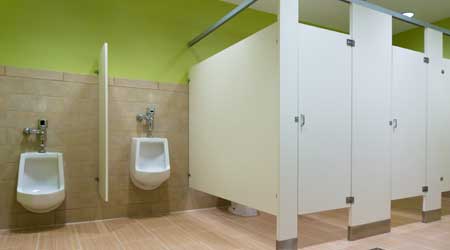Managers can Take Steps to Maximize Water-Conservation Savings
Part 4 of a 4-part article on water-saving projects
Managers can take a number of steps during the specification process to establish a post-installation maintenance plan to help keep water use low.
When specifying products, managers should “have test areas set up where they can test new urinals, toilets, and faucets on a small trial basis before they roll it out to a campus or hospital,” D’Amato says. “The (product managers) who run those are very savvy when it comes to the performance of these products and know them inside and out. They know how to gauge how well it will work in their building. They look at all the aspects of course and consider what kind of maintenance they think they might need over time.”
When establishing a post-installation maintenance plan, finding leaks should always rank near the top of the priorities.
“Look for leaks during inspections,” Fisher says. “From a manufacturing standpoint on maintenance, we design our products to be maintenance-free, but as different water uses, and other variables between facilities changes, it’s kind of tough. Regular inspections can help detect leaks.”
Full water traps also are essential for plumbing systems to function properly.
“With less use of water, the traps could dry out, and that’s not a good thing,” Tanzillo says. “One thing we’ve built into our electronic faucets is a hygiene flush. What the hygiene flush does is clear the line and keeps the trap full. Two important things need to be done — move stagnant water and fill the trap.”
Into the future
Managers might consider finding ways to use reclaimed, or gray, water, for plumbing purposes as the next step in the efforts to reduce water use in their facilities.
“The use of gray water for non-potable applications is becoming more prevalent,” says Gary Cole of T&S Brass and Bronze Works. “This requires major retrofitting for existing facilities but is more viable for new construction.”
With flow rates already so low, manufacturers also might start expanding their quest to reduce water use by going beyond the restrooms.
Says D’Amato, “I think it’s important for (manufacturers) to follow the lead of PMI (Plumbing Manufacturers International) and other associations, like PERC (Plumbing Efficiency Research Coalition), to measure the effects of different variables on drain-line carry and grow together as an industry to make sure the products and solutions we’re putting out there are going to work in the real world.”
Related Topics:















